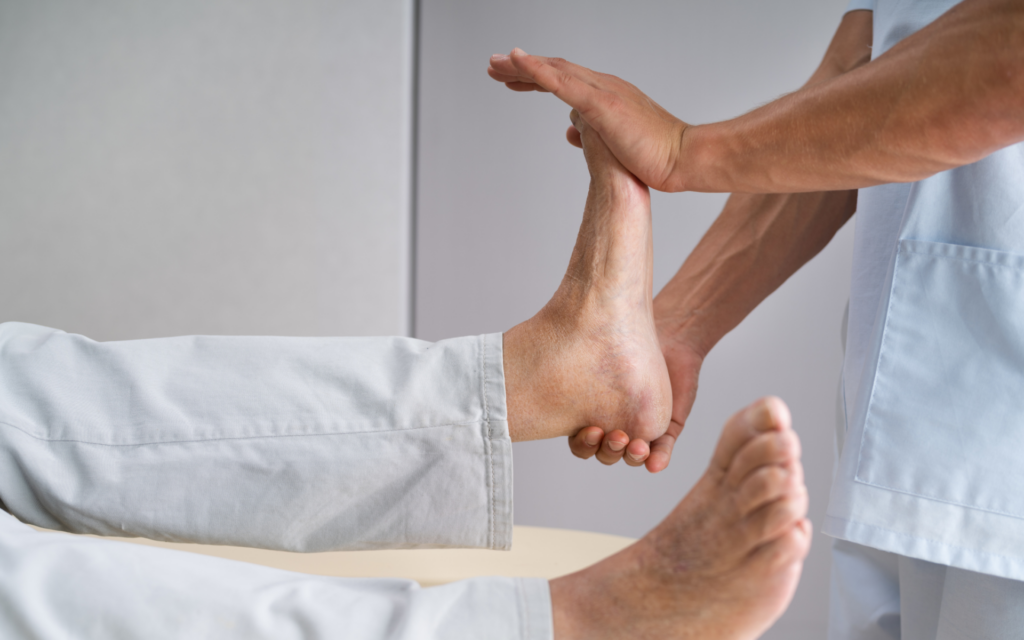What Are The Most Common Ankle Injuries?

Knowing common ankle injuries is important for seeking proper medical treatment.
The ankle is a vital joint that connects bones in the lower leg to those of the foot. Without the ankle, the foot could not move upwards, downwards, and to the side properly. Many sports and physical activities would be impossible without the joint.
Here is what to know when you are experiencing ankle pain or instability.
Ankle Sprains
With an estimated 30,000 ankle sprains per day in the U.S alone, it is likely an explanation for your ankle pain.
An ankle sprain is when you damage the ligaments in your ankle. These injuries come in three grades of severity.
- Grade I—you can still walk and bear weight.
- Grade II—you are still able to walk but with a limp
- Grade III—when you are unable to walk.
These discomforts and impairments associated with different grades of ankle sprains are typical with other ankle injuries, too, so how do you know if you have a sprain? Here is what to look for.
Ankle sprains most likely occur without a noise. The swelling does not affect the overall shape of the foot, and the pain is in the soft part of the ankle. Talk to your doctor if you think you have a sprain. Failure to seek treatment for repeated ankle sprains could cause chronic ankle instability.
If this does not sound like your ankle injury, then you might have a fracture.
Ankle Fractures
Ankle fractures refer to when one or more bones of the ankle joint are broken. The more bones broken, the more unstable the ankle becomes.
Common signs indicating an ankle fracture: a popping sound heard at time of injury, along with immediate and severe pain, bruising, inability to put weight on the foot, and most notably, a deformity, or “out of place” appearance of the ankle.
Ankle fractures can range in type and severity like ankle sprains. One type of serious injury is Pilon fractures, a break at the bottom of the shinbone that often takes place in an event like a car collision. Pilon fractures are so severe that they can do permanent damage to the ankle joint. Talus fractures are also the result of high-velocity events, and are a break in one of the forming bones of the ankle.
A common and less critical break are stress fractures. So common that 5 to 15 percent of all running injuries are stress fractures. These are ‘micro-fractures’ in the bones and a typical overuse injury. Athletes and runners alike are at risk for this injury, as it involves repetitive stress from intense physical activity. If you suspect a stress fracture, it is best to speak with a physician regardless of your activity level.
Achilles Tendon Injuries
The Achilles tendon is known for being the largest tendon in the body, as it is the connective tissue of the calf muscles to the heel bone. Despite its strength, the Achilles tendon is still susceptible to injury. Common injuries of the springy band of tissue are tendonitis and tendon ruptures.
Of possible injuries, Achilles tendonitis is possibly the least concerning. This occurs when some of the tendon is inflamed. Two kinds are noninsertional and insertional, which affect different tendon parts. Symptoms of both kinds of Achilles tendonitis include pain in the heel when moving, stiffness, and difficulty standing on one toe.
Achilles tendon ruptures are more than just inflammation, as this is the full or partial tear of the tendon. This is usually caused by sudden movement, often seen in sports or freak accidents. Achilles tendon rupture signs usually involve hearing a snap at the back of your ankle, sudden pain in the area, swelling, and bruising.
Management and treatment of Achilles tendon tears should begin with the RICE method (rest, ice, compression, and elevation). It is important to seek medical attention from a healthcare provider for this injury. Treatment may include a brace, physical therapy, or surgery.
For a complete Achilles tendon tear, most medical providers will suggest surgery. During surgery, the two ends of the torn tendon are stitched back together. A cast and physical therapy will be needed after surgery. Most ruptures will heal within four to six months.

Let Kintsugi Physical Therapy & Wellness Help You Recover From Your Ankle Injury
Ankle injuries can cause significant damage if they are not treated properly. If your ankle does not start to feel better after a few days, don’t hesitate to reach out for physical therapy.
Our team at Kintsugi Physical Therapy & Wellness believes in treating the body holistically, taking all of your needs into account. We are able and ready to you rebuild your life using the expertise and innovative techniques we have available.
Contact us or call us at 253-330-8518 to get started.
